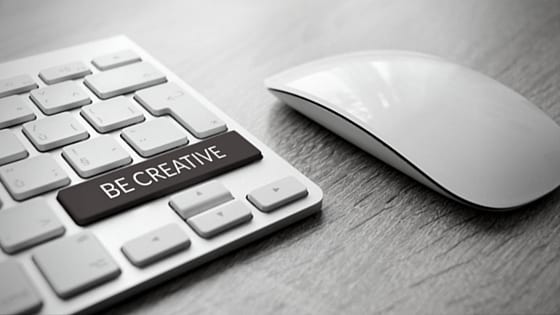“I think my client needs to refresh his brand,” one of our business contacts confided over coffee recently. “But I don’t know enough about design to put my finger on it. Do you have any tips?’
Actually, yes. We have so many, we can’t contain them within a conversational answer. That’s why we’ve written this lengthy roundup instead.

Best of all, the principles of a well-conceived brand are not as elusive as you might think. If you’re already sensing something’s wrong, you’re probably right. After all, to quote Jeff Bezos, ‘Your brand is what other people say about you after you leave the room.’
Simply put, brand design is a form of communication: a tool for sending the right messages about your brand. Or your client’s brand. Or your employer’s brand.
Getting the basics right
First of all, let’s look at the basics of a brand identity. This is so much more than just a logo. It starts with the actual brand experience, from the swiping or tapping or other usage features, to the unboxing and after-sales support.
Then there’s the visual language of your business, from the logo to typefaces, palettes, graphic elements and photography. These should be consistent across every output: internal materials and external ones. There’s also voice: the way language reinforces the design, to project the business’ authority, warmth, guy or girl-next-doorness, sophistication or other defined value.
In short, the brand elements need to reflect a business’s peerless values, audience mindset and strategy. So make sure to first audit those brand foundations by considering its original strategy and whether this still applies.
With the brand audited and strategy reviewed, you can go through the checklist below, loosely ordered from fundamental to surface elements.
Fundamental areas where the brand might need an update
- Design doesn’t support brand values
Even for the uninitiated, design has some fundamental cues that designers use and audiences subconsciously respond to.
The branding for a tech firm will have movement, energy, surprise. For an artisan food producer, it’ll have warmth, craft and earthiness.
Remember, we’re not just talking obvious areas like the logo and website. Look at every output. The thoughtful packaging from a premium retailer, for example, exudes brand values right down to the nutty aroma of the organic inks used on the tissue paper.
- It contravenes the standard principles of good design
Multiple fonts. Cookie-cutter graphics. Conflicting styles. Photos that don’t reinforce brand values.
Think of design as a tool that conveys the qualities and feeling of the product or service. At its very minimum, it should convey texture, movement, scale and mood, which you can learn more about in an amazing 2016 talk by the prodigious John Maeda.
Even if you’re not a design pro, you’ll know you’re looking at a badly designed brand identity just from the flat feeling you get. Look away from that design, and chances are you won’t even remember what the business stands for, let alone what it might look, feel, smell or taste like.
- Unclear user pathway
Imagine a major hospital or university without clear signage or an ecommerce website without a distinct shopping cart. Clear thought plays a major role in good design, and not all the tricks are necessarily new.
Just go online to find the infographics created during the Crimean War by Florence Nightingale, a data scientist in her own right. We still use these graphic styles today.
Compare that with the current wayfinding graphics at Sydney’s Town Hall Station. With no signboards showing from which platform to access which lines, infrequent rail travellers are forced to flag down a staffer to ask. Don’t even get us started on the use of the letter ‘T’ for trains on signage outside the station (plus ‘L’ for light rail and ‘B’ for buses), instead of a more universal transport icon.
Okay, so you probably don’t operate a railway. Nevertheless, your website, onboarding systems and follow-up should guide a clear, consistent and logical set of actions.
Outward brand areas to update
- Get out of your stylistic rut
Remember the 90s? Yeah, so do we. Grunge. Supermodels. Madonna’s cone bra. They’ve all gone now, and so should your drop-shadow typeface or mirror-finish logo.
Nineties aside, every era has its hallmark graphic elements. Today’s crossed-oar logo or gradient graphic will be tomorrow’s joke, so make sure that any on-trend styles are relevant, sparing and combined with more timeless elements.
If you’re still not sure how to direct your team, just Google any styles you suspect are naff. You’ll soon be scrolling pages and pages of evidence. Swoosh logos, retro fonts, starbursts, websites that play music… they all have to be used cleverly and in brand-new ways to make an impact.
- Incorporate something new
Ever wondered why so many 1950s brands have a screen-printed feel, or why 80s brands look so loud and tricked-up? Simple – they reflect the technology and production methods available at the time.
Similarly, newer innovations in digital technology are leading brand elements that simply weren’t possible 10 or more years ago. That ranges from small-run prints that let you use a different colour on each person’s business card, to video everything, mobile-responsive websites, animated logos, GIFs and more. Embrace these ideas, and update them often to stay relevant.
- There’s too much jammed in
Clutter is the enemy of good design.
For example, a clash of stock photo styles: sleek business people in icy greys one minute, and warm golden coffees on a wooden table the next. Or multiple fonts: for headers, subheads, breakouts and body copy. Or overbearing finishes: breakouts, underlines, backdrops. Even some of the video backgrounds for the latest crop of websites are overdone. Background motion graphics should be a gentle jiggle on the screen, not epic cinematography. Otherwise you’ll start to detract from the main message and make your viewer feel carsick.
- There’s not enough added in
Don’t get us wrong; minimalism is a core feature of good design. We haven’t had a client yet who wanted a complicated brand identity – most yearn for the super-sleekness of Apple, Uber or Xero.
But for corporations with a lot to talk about – technical specs, news, people, projects, products and more – you can’t just expect the logo and palette to do the work of navigating users to the sections they want.
You’ll also need an entire graphic concept for the navigational elements, information hierarchies, calls to action, user engagement pieces and other parts of your physical or digital materials. You’ll need a photography concept so that all other imagery sings from the same songbook. You’ll need an actual team photo (not just sleek, square-jawed stock photo people).
So as you can see, good branding draws on a certain degree of common sense principles. It also takes an experienced eye and an understanding of key terms to get it right.
This understanding is best nurtured by reading some of the world’s great design blogs. (For the record, some of our favourites are BP&O, the Brand Newblog of Under Consideration and Logo Lounge, especially its very entertaining annual wrap on logo trends). Make sure also to follow design companies you like on social media.
Soon, you’ll develop a hawk-like ability to spot good design from afar, and can guide your client or company to the right design firm to help.






















